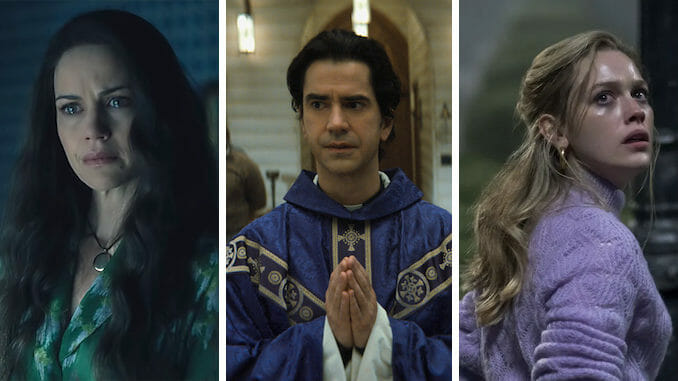How Mike Flanagan Expertly Crafts Terror from Our Deepest Emotional Fears
Photo Courtesy of Netflix
Note: This article contains light spoilers for The Haunting of Hill House, The Haunting of Bly Manor, and Midnight Mass.
Horror is a vast genre that incorporates slashers, psychological horrors, the paranormal, and more among its ranks. Some productions are focused on gore while others center on fear, with the best ones crafting and exploring emotional dynamics between characters. Many of those stories become generation-spanning franchises; Wes Craven, John Carpenter, and David Cronenberg are just a few legendary horror directors whose work remains iconic. However, when it comes to modern-day horror, one particular director is elevating the genre to new emotional heights: Mike Flanagan.
Flanagan already has a long list of successful films and television shows under his belt. Many of his works, such as Doctor Sleep, The Haunting of Hill House, and Midnight Mass, linger in the mind long after the final credits have rolled. Flanagan’s undeniable talent is itself a work of art; he has an incredibly gifted eye for capturing human emotions, and the way he creates a sense of terror in his films and series is narratively insightful and complex. When viewing and analyzing his work, it’s easy to see how Flanagan is one of the most remarkable and inventive horror directors of our time, especially as he bases the tension and fear in his characters on real-life horrors rather than the number of jump scares or gore.
It’s one of the reasons the first of his Netflix series, The Haunting of Hill House (based on the story by Shirley Jackson), became an immediate success. In it, Flanagan tells the story of the Crain family: Olivia (Carla Gugino), her husband Henry (Henry Thomas), and their five children. Strange things begin to happen as soon as they move into the infamous and mysterious abode, and while Henry is busy repairing the house to resell it, Olivia gradually descends into madness. Simultaneously, the children experience many paranormal encounters, and we follow the story back and forth through time as it explores the impression the house left on them and how it ultimately shaped their lives.
The series’ literal and symbolic themes blend from episode to episode, creating a beautiful and heartbreaking story about grief, addiction, mental illness, and paranormal experiences. One quote, in particular, lingers from its emotional height: “The rest is confetti.” Like any work of art, this can be read in a variety of ways. For some, it speaks of life’s fleeting moments and how insignificant everything else is compared to love and loved ones. For others, it’s about death and how it’s up to us to accept it as a natural thing that sometimes comes unexpectedly.
Hill House has given birth to the term that Flanagan enthusiasms refer to as “scrying:” screaming from fear and crying at the same time. The Haunting of Bly Manor, another installment in The Haunting series, certainly reflects this feeling. Set in 1987, the narrative tells the story of Dani Clayton (Victoria Pedretti), a doe-eyed American teacher who flees to England following the tragic death of her fiancé. When she arrives at Bly, she takes on the role of au pair for two orphaned children, helping to manage the sprawling estate alongside a cook, Owen (Rahul Kohli), a housekeeper, Hannah (T’Nia Miller), and a groundskeeper, Jamie (Amelia Eve).
Dani soon finds herself unveiling the dark secrets of Bly Manor, such as the mystery behind the unfortunate passing of a former au pair, as well as the dangerous Lady of the Lake. But she also falls in love with Jamie, and is determined to confront the ghosts of her own past. Unfortunately, Dani has no idea what is about to happen or how much of herself she will have to sacrifice to save those in the house from the Lady of the Lake. Based on Henry James’ novella, The Turn of the Screw, Bly Manor is in many ways a gothic romance. It may not appear frightening at first, but the realism of this particular plotline between Dani and Jamie confronts the themes of losing a loved one and overcoming grief.